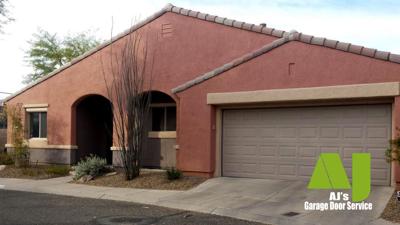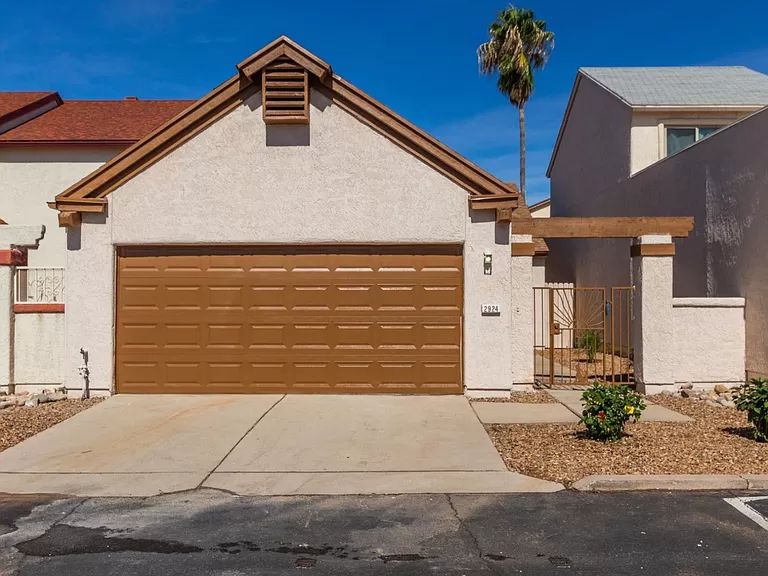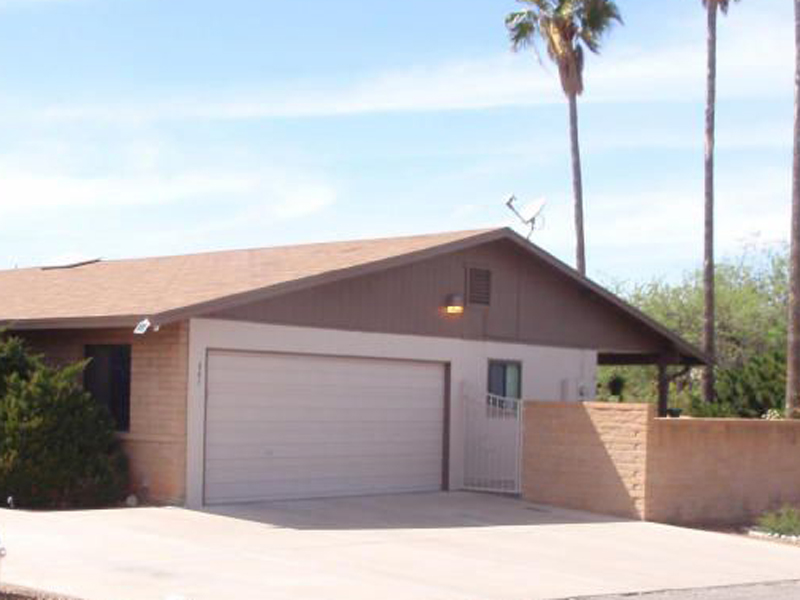Is Your Garage Door Stuck? Right here's What to Do Initial
When your garage door won't open up, begin with these important safety and security checks prior to attempting any type of repair work. Initially, make sure nobody is standing near the door which automobiles are clear of the opening. Try to find obvious indications of damage like damaged panels, curved tracks, or hanging cords. If you see a snapped spring or badly damaged components, quit promptly and call an expert—-- these repairs call for specialized tools and experience to handle safely.

Check These 6 Points Prior To Calling a Professional
Before thinking you need pricey fixings, run through this fast analysis checklist that fixes most garage door problems:
-
Power source: Confirm the opener is connected in and the outlet is functioning
-
Remote batteries: Change dead batteries in your remote
-
Manual lock: Examine if someone unintentionally engaged the hand-operated lock
-
Obstructions: Search for debris blocking the door's course or sensing units
-
Emergency launch: Ensure the red emergency situation cable hasn't been pulled
-
Circuit breaker: Confirm the garage circuit hasn't stumbled
These simple checks resolve around 70% of garage door issues without requiring expert intervention.
10 Typical Reasons Your Garage Door Won't Open
Recognizing why your garage door opener isn't working aids you select the appropriate solution. Right here are the most regular causes property owners encounter:
Dead remote batteries represent the simplest solution—-- when batteries pass away, the remote can not send signals to the opener. Power interruptions or stumbled breakers cut electrical energy to the electric motor. Broken springs stop the door from raising correctly and require prompt specialist focus. Sensor imbalance causes safety and security systems to obstruct door operation. Track blockages quit rollers from moving smoothly. Motor overload triggers automatic shutoffs when the opener finds resistance. Restriction switch problems puzzle the opener concerning door setting. Cable damage interferes with the training system. Weather-related problems affect door motion during extreme temperatures. Component wear from age gradually minimizes system efficiency.
Problem # 1: Dead Push-button Control Batteries
When your wall switch works however your remote does not, dead batteries are normally the offender. The majority of garage door remotes make use of either 3-volt lithium or 12-volt alkaline batteries. Eliminate the back cover of your remote and check the battery kind. Change with fresh batteries and check the remote. If it still does not function, you may need to reprogram it to your opener. Consult your opener's manual for particular reprogramming directions, as the procedure varies by producer.
Trouble # 2: Power Supply Issues
Garage door power issues often stem from loose links or stumbled circuits. Examine that the opener is strongly connected into its outlet—-- vibration can loosen up connections in time. Evaluate the electrical outlet with an additional device to validate it's functioning. Examine your home's breaker box for tripped circuits, particularly if you've experienced storms or power fluctuations. GFCI electrical outlets may have stumbled and need resetting. If the opener has power but won't respond, the issue most likely lies somewhere else in the system.
Trouble # 3: Broken or Damaged Springs
Damaged garage door springs are amongst one of the most hazardous elements to deal with. If you listen to a loud bang from your garage or notice the door really feels exceptionally hefty when attempting to raise manually, a spring has actually most likely snapped. Torsion springtimes run flat over the door, while extension springtimes remain on either side. Never attempt spring repair work on your own—-- these parts keep incredible stress that can cause severe injury or fatality. Expert substitute generally sets you back $150-$300 but guarantees your security.
Trouble # 4: Obstructed Security Sensors
Modern garage doors feature safety sensing units that avoid closure when objects are spotted. These sensing units can quit the door from opening up if they're filthy, misaligned, or blocked by debris. Clean sensor lenses with a soft cloth and make certain nothing obstructs the invisible light beam in between them. Examine that sensing units are correctly lined up—-- many have indication lights that show link status. Sensing unit problems frequently fix with simple cleansing and modification.
Trouble # 5: Track Obstructions or Damage
Garage door tracks guide rollers as the door goes up and down. Dirt, particles, old oil, or tiny objects can jam the system. Check tracks aesthetically and get rid of any obstructions with a brush or fabric. Try to find damages, flexes, or bending that can impede smooth procedure. Minor track changes are possible for useful property owners, but significant damage requires specialist repair to prevent more issues or safety risks.
Issue # 6: Garage Door Opener Electric Motor Issues
When the garage door motor runs but the door does not move, a number of concerns could be accountable. The motor may be overloaded and shutting off as a safety measure. Equipment wear, especially in older devices, can prevent appropriate procedure. Chain or belt drive troubles impact power transmission. If you listen to unusual grinding, clicking, or humming audios, stop utilizing the opener immediately. Motor repair work typically set you back more than replacement, especially for devices over ten years old.
Step-by-Step Do It Yourself Troubleshooting Overview
Follow this organized method to garage door troubleshooting while focusing on safety throughout the procedure:
Action 1: Test the wall button initially. If it functions yet the remote does not, concentrate on remote issues. If neither works, inspect power supply.
Action 2: Examine the manual launch cable. If it's been pulled, the opener is disengaged from the door. Press the cart back to reconnect.
Step 3: By hand examine the door by disengaging the opener and trying to lift the door by hand. It ought to move smoothly and remain in location when half-open.
Step 4: Examine visible components for damage, paying unique focus to springs, cables, and tracks.
Tip 5: Examine all safety and security attributes consisting of sensors, restriction buttons, and auto-reverse functions.
Action 6: Test various controls (remote, wall button, keypad) to separate the trouble resource.
Always use shatterproof glass and work handwear covers when executing examinations, and never ever effort repairs on springs or high-tension parts.
When to Call a Professional vs. do it yourself Solutions

Recognizing when to call a garage door specialist versus trying do it yourself repair services secures both your security and your purse. Deal with these problems on your own: dead remote batteries, power supply problems, small track cleansing, sensing unit cleansing and alignment, and basic lubrication.
Never ever attempt these repair services on your own: spring substitute or modification, wire repairs, major track realignment, electric wiring concerns, opener electric motor replacement, or any type of repair work involving high-tension parts. Professional service technicians have specialized devices, training, and insurance policy to take care of harmful repair work securely.
Consider repair service expenses versus substitute costs, specifically for doors over 15 years old. Modern garage doors use far better safety and security attributes, power performance, and reliability than older designs.
Emergency Situation Garage Door Solutions
When you're stuck to a garage door that won't open up and require immediate accessibility, comply with these emergency situation procedures:
Handbook Operation: Draw the red emergency situation launch cord to disengage the opener. This allows hands-on procedure yet needs appropriate method to prevent injury. Raise the door slowly and evenly, using leg muscles instead of your back. A lot of domestic doors weigh 100-150 pounds, making them manageable for most adults.
Temporary Fixes: If the door opens manually however will not stay up, prop it open with sawhorses or clamps—-- never utilize your body or vehicles as supports. For doors that won't shut entirely, make certain the opening is safeguarded if you should leave.
Emergency situation Service: Many garage door firms supply 24/7 emergency situation service for situations involving safety concerns, caught cars, or total system failures. While more pricey than normal service telephone calls, emergency situation repair services give immediate options when needed most.
Safety and security Warning: What NOT to Do
Garage door safety and security calls for understanding harmful repair work that must never be attempted by home owners:
Never ever attempt to repair springtimes—-- they store sufficient power to create deadly injuries when they snap or are poorly taken care of. Do not force a stuck door—-- this can damage the opener, tracks, or door panels, developing extra pricey problems. Avoid bypassing safety and security features—-- sensors and auto-reverse devices prevent major injuries and home damages.
Don't neglect strange sounds—-- grinding, scuffing, or banging noises suggest problems that aggravate gradually. Never ever make use of the door if cables are torn or broken—-- the door might drop all of a sudden. Do not attempt electrical repair services unless you're a certified electrician—-- garage door openers utilize both 120V home current and low-voltage control circuits.

Preventive Maintenance to Prevent Future Troubles
Regular garage door upkeep avoids most usual issues and extends system life expectancy dramatically:
Month-to-month Jobs: Aesthetic inspection of all parts, testing auto-reverse safety attributes, inspecting and tightening up hardware, and cleansing tracks and sensing units.
Quarterly Tasks: Lubing all moving parts with ideal garage door lubricant, testing guidebook operation, and examining climate sealing.
Yearly Tasks: Professional inspection and tune-up, springtime change if required, and opener upkeep consisting of belt or chain change.
Seasonal Jobs: Getting ready for weather extremes, inspecting insulation, and changing opener setups for temperature adjustments.
Constant upkeep expenses much less than emergency situation repairs and makes certain dependable operation year-round.
Garage Door Will Not Open Frequently Asked Questions
Why won't my garage door open with the remote but deals with the wall surface switch?
This typically suggests dead remote batteries, signal interference, or the requirement to reprogram the remote. Inspect batteries first, then consult your opener manual for reprogramming directions.
Can I by hand open my garage door if the power is out?
Yes, pull the red emergency situation release cable to disengage the opener, then raise the door by hand. Be planned for the door's full weight and lift with appropriate technique to stay clear of injury.
How do I understand if my garage door spring is broken?
Indications include a loud bang from the garage, the door sensation incredibly hefty when lifting by hand, visible gaps in the springtime coils, or the door just opening up a couple of inches prior to quiting.
Is it safe to use my garage door if it won't open right?
No, partial operation shows mechanical issues that could intensify all of a sudden. Quit utilizing the door and have it inspected by an expert to prevent more damages or injury.
What should I do if my garage door opens but will not close?
Check safety sensors for blockages or imbalance, analyze the tracks for debris, and check the auto-reverse feature. If these do not address the issue, get in touch with a professional.
How much does it set you back to take care of a garage door that will not open up?
Prices vary widely depending upon the trouble: battery substitute ($5-$10), specialist medical diagnosis ($50-$100), spring substitute ($150-$300), or opener substitute ($200-$500).
Can weather affect my garage door's ability to open?
Yes, severe cold can thicken lubricants and influence metal elements, while warmth can trigger expansion issues. Most problems fix as temperature levels stabilize, yet persistent problems may need specialist attention.
Why does my garage door open up a few inches then stop?
This generally suggests busted springs, restriction switch problems, or track obstructions. The opener's safety and security features quit operation when resistance is found, stopping damage to the electric motor or door.
Get Expert Help for Facility Issues
When do it yourself troubleshooting doesn't resolve your garage door issues, specialist technicians give the knowledge and tools required for safe, how to handle a garage door off the rails lasting fixings. Qualified specialists diagnose problems properly, make use of manufacturer-approved components, and supply guarantees on their job.
Expert solutions include: extensive system examinations, springtime and cable replacement, opener repair work and substitute, track positioning and replacement, electrical troubleshooting, and emergency service calls.
What to expect: in advance rates, certified and insured service technicians, same-day solution for numerous fixings, and follow-up upkeep referrals.
The majority of garage door business offer free estimates for major repair work and can supply instant options for urgent problems influencing home safety and security or lorry access.
Obtaining Your Garage Door Working Again
A garage door that won't open does not have to wreck your day or break your spending plan. Begin with simple troubleshooting steps like examining power, replacing batteries, and checking out for evident obstructions. Many problems have fast do it yourself services that recover typical procedure within mins.
However, identify when professional help is necessary—-- particularly for spring-related problems, electric troubles, or facility mechanical failures. Attempting harmful repairs yourself runs the risk of significant injury and usually develops much more costly troubles.
Regular upkeep avoids most garage door problems and ensures trusted operation for many years ahead. When issues do take place, resolve them promptly to stay clear of more costly repair services and preserve your home's protection and benefit. Whether you require a simple battery substitute or total system overhaul, services exist to get your garage door working smoothly again.